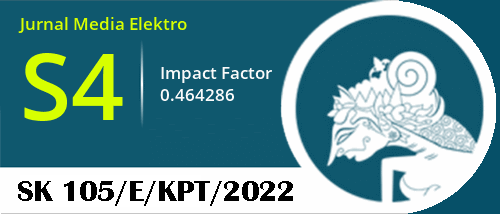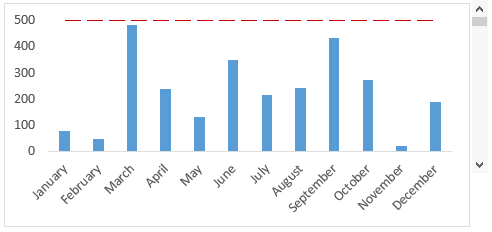RANCANG BANGUN SISTEM PENGENDALI PH OTOMATIS PADA KOLAM BUDIDAYA IKAN NILA
Abstract
Water quality is one of the important factors to increase the success of aquaculture production besides disease factors and fish seed quality. Water quality in auaculture ponds greatly affects the growth, survival, and production of tilapia. Several factors that affect water quality are the acidity level (pH). The maximum pH value ranges from 6.5 to 8.5. This study aims to design an automatic water pH control system in tilapia ponds. The water quality control system in fish ponds is often done manually so it is less efficient. The system is designed by combining a pH sensor pump, and solenoid valves using ESP32 microcontroller. When the pH sensor detects a pH value of less than 6.5 or more than 8.5, the system will automatically change the water. The test results in the pond showed that the system was able to respond with the respective rise time and settling time values, namely 1240s and 1380s. Based on these results, it can be concluded that the pH control system that was built can function according to the design.
Downloads
References
N. K. Arora and I. Mishra, “Progress of sustainable development goal 7: clean and green energy for all as the biggest challenge to combat climate crisis,” Environmental Sustainability, vol. 5, no. 4, pp. 395–399, 2022, doi: https://doi.org/10.1007/s42398-022-00257-2.
E. C. Legarda et al., “Integrated recirculating aquaculture system for mullet and shrimp using biofloc technology,” Aquaculture, vol. 512, p. 734308, Oct. 2019, doi: https://doi.org/10.1016/j.aquaculture.2019.734308.
S. M. Pinho et al., “FLOCponics: The integration of biofloc technology with plant production,” Reviews in Aquaculture, vol. 14, no. 2, pp. 647–675, Sep. 2021, doi: https://doi.org/10.1111/raq.12617.
N. B. Tarigan, S. Goddek, and K. J. Keesman, “Explorative Study of Aquaponics Systems in Indonesia,” Sustainability, vol. 13, no. 22, p. 12685, Nov. 2021, doi: https://doi.org/10.3390/su132212685.
Y.-B. Yu et al., “Biofloc Application Using Aquaponics and Vertical Aquaculture Technology in Aquaculture: Review,” Fishes, vol. 8, no. 11, p. 543, Nov. 2023, doi: https://doi.org/10.3390/fishes8110543.
N. Sharma, S. Acharya, K. Kumar, N. Singh, and O. P. Chaurasia, “Hydroponics as an advanced technique for vegetable production: An overview,” Journal of Soil and Water Conservation, vol. 17, no. 4, pp. 364–371, 2018, doi: https://doi.org/10.5958/2455-7145.2018.00056.5.
S. Saseendran, K. Dube, M. H. Chandrakant, and A. M. Babitha Rani, “Enhanced growth response and stress mitigation of genetically improved farmed Tilapia in a biofloc integrated aquaponic system with bell pepper,” Aquaculture, vol. 533, p. 736200, Feb. 2021, doi: https://doi.org/10.1016/j.aquaculture.2020.736200.
T. Yang and H.-J. Kim, “Comparisons of nitrogen and phosphorus mass balance for tomato-, basil-, and lettuce-based aquaponic and hydroponic systems,” Journal of Cleaner Production, vol. 274, p. 122619, Nov. 2020, doi: https://doi.org/10.1016/j.jclepro.2020.122619.
N. R. Moparthi, Ch. Mukesh, and P. Vidya Sagar, “Water Quality Monitoring System Using IOT,” 2018 Fourth International Conference on Advances in Electrical, Electronics, Information, Communication and Bio-Informatics (AEEICB), Feb. 2018, doi: https://doi.org/10.1109/aeeicb.2018.8480963.
Kementerian Kelautan Dan Perikanan Republik Indonesia. Available at: https://kkp.go.id/kategori/181-Laporan-Tahunan (Accessed: 21 November 2023).
M. F. Maldino, M. Junaidi, dan D. P. Lestari, “Pengaruh Kombinasi Filter dengan Sistem Resirkulasi Terhadap Pertumbuhan dan Kelangsungan Hidup Benih Ikan Nila (Oreochromis niloticus),” J. Ruaya, vol. 11, no. 1, hlm. 22–30, 2023. http://dx.doi.org/10.29406/jr.v11i1.4632
L. Jansen and K. J. Keesman, “Exploration of efficient water, energy and nutrient use in aquaponics systems in northern latitudes,” Cleaner and Circular Bioeconomy, vol. 2, p. 100012, Aug. 2022, doi: https://doi.org/10.1016/j.clcb.2022.100012.
S. Chen, X. Sun, X. Tian, W. Jiang, X. Dong, and L. Li, “Influence of ammonia nitrogen management strategies on microbial communities in biofloc-based aquaculture systems,” Science of The Total Environment, vol. 903, pp. 166159–166159, Dec. 2023, doi: https://doi.org/10.1016/j.scitotenv.2023.166159.
Man Huan Su et al., “Simultaneous removal of toxic ammonia and lettuce cultivation in aquaponic system using microwave pyrolysis biochar,” Journal of Hazardous Materials, vol. 396, pp. 122610–122610, Sep. 2020, doi: https://doi.org/10.1016/j.jhazmat.2020.122610.
S. M. P. Garcia, C. L. B. Santos, K. M. E. Briones, S. M. L. Reyes, M. A. G. Macasaet, and R. Pula, “Automated Water Quality Monitoring and Control for Milkfish Pond,” World Congress on Engineering and Technology; Innovation and its Sustainability 2018, pp. 129–139, Aug. 2019, doi: https://doi.org/10.1007/978-3-030-20904-9_10.
Md. M. Islam, M. A. Kashem, S. A. Alyami, and M. A. Moni, “Monitoring water quality metrics of ponds with IoT sensors and machine learning to predict fish species survival,” Microprocessors and Microsystems, p. 104930, Sep. 2023, doi: https://doi.org/10.1016/j.micpro.2023.104930.
Md. Moniruzzaman Hemal et al., “An Integrated Smart Pond Water Quality Monitoring and Fish Farming Recommendation Aquabot System,” Sensors, vol. 24, no. 11, pp. 3682–3682, Jun. 2024, doi: https://doi.org/10.3390/s24113682.
Rahib Lentera Alam and Aris Nasuha, “Sistem Pengendali pH Air dan Pemantauan Lingkungan Tanaman Hidroponik menggunakan Fuzzy Logic berbasis IoT,” Elinvo (Electronics, Informatics, and Vocational Education), vol. 5, no. 1, pp. 11–20, May 2020, doi: https://doi.org/10.21831/elinvo.v5i1.34587.
Renny Eka Putri, Afifah Khainur, and Andasuryani Andasuryani, “Pengembangan Sistem Otomatisasi pH Larutan Nutrisi pada Hidroponik Sistem DFT (Deep Flow Technique) Berbasis IOT,” Agritech, vol. 43, no. 3, pp. 259–259, Sep. 2023, doi: https://doi.org/10.22146/agritech.71305.
Devita Gude Devi, W. Musa, and Syahrir Abdussamad, “Rancang Bangun Sistem Pengontrol dan Monitoring pH Air Hidroponik Menggunakan Aplikasi Blynk,” Jambura Journal of Electrical and Electronics Engineering, vol. 6, no. 1, pp. 57–62, Jan. 2024, doi: https://doi.org/10.37905/jjeee.v6i1.20827.
Ari Rahayuningtyas, Diang Sagita, and Novita Dwi Susanti, “Rancang bangun sistem monitoring dan kontrol pH air untuk budidaya ikan lele,” Agrointek : Jurnal Teknologi Industri Pertanian, vol. 17, no. 1, pp. 97–105, 2023, doi: https://doi.org/10.21107/agrointek.v17i1.14129.g6972.
Badan Standar Nasional. 2009. SNI 6141:2009. Produksi Benih Ikan Nila Hitam (Oreochromis Niloticus Bleeker) Kelas Benih Sebar. Badan Standarisasi Nasional: Jakarta. https://pesta.bsn.go.id/produk/detail/7722-sni61412009
Z. Meng et al., “Design and Application of Liquid Fertilizer pH Regulation Controller Based on BP-PID-Smith Predictive Compensation Algorithm,” Applied sciences, vol. 12, no. 12, pp. 6162–6162, Jun. 2022, doi: https://doi.org/10.3390/app12126162
Copyright (c) 2024 Christio Revano Mege, Stevy Canny Louhenapessy, Vera Khoirunisa, Septia Eka Marsha Putra, Astuti BP Simanullang

This work is licensed under a Creative Commons Attribution-ShareAlike 4.0 International License.
This work is licensed under CC BY-SA 4.0

 Christio Revano Mege(1)
Christio Revano Mege(1)











